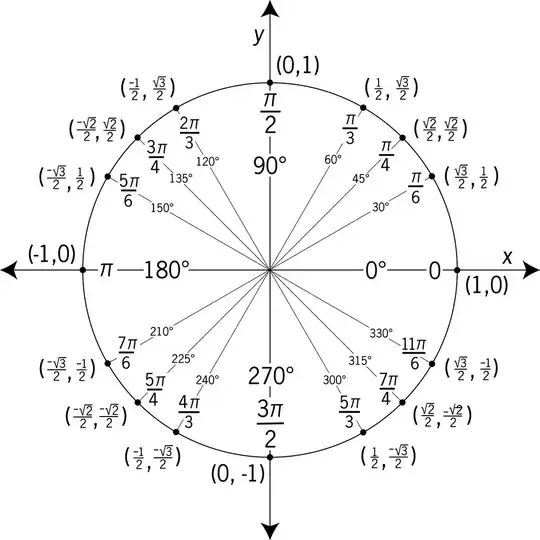One could probably write a whole book about this topic and the internet has several resources that help to answer the question. So summarize a few things.
Trigonometry has it's roots in astronomy. This makes good sense since angles play an important role here.
As you figured out it isn't too hard to find exactly (or approximately) the values of trigonometric functions at angles like $30^\circ, 45^\circ,$ and $60^\circ$. Using various trigonometric identities like
$$\begin{align}
\sin(x + y) &= \sin x \cos y + \cos x \sin y \\
a/\sin A &= b/\sin B = c/\sin C
\end{align}
$$
and (linear) interpolation people calculated other values. People would then create tables of values of the trigonometric functions. These tables could then be used by the "common man" for finding the values. It is, for example, a nice exercise to create a table of values of sine for multiples of $3^\circ$. For example, Ptolemy (2nd century AD) essentially created a table of values for each half degree angles.
Methods evolved and people found approximations to trigonometric functions. For example, in the 7th century AD Bhaskara I produced a formula:
$$
\sin x \approx \frac{16x (\pi - x)}{5 \pi^2 - 4x (\pi - x)}, \qquad \left(0\leq x\leq\pi\right).
$$
Later on more detailed tables were developed that contained values with greater accuracy.
Slide rules would contain scales for calculations of trigonometric functions. I am not sure exactly when slide rules first had trig. scales on them, but they definitely had these before the invention of the pocket calculator in the 20 century.
So in summary, the "common man" (scientist) "calculated" values of trigonometric functions before the calculator primarily using tables and slide rules. Some mathematicians where then involved in creating these tables.
A couple of reference that I used for the above are:
